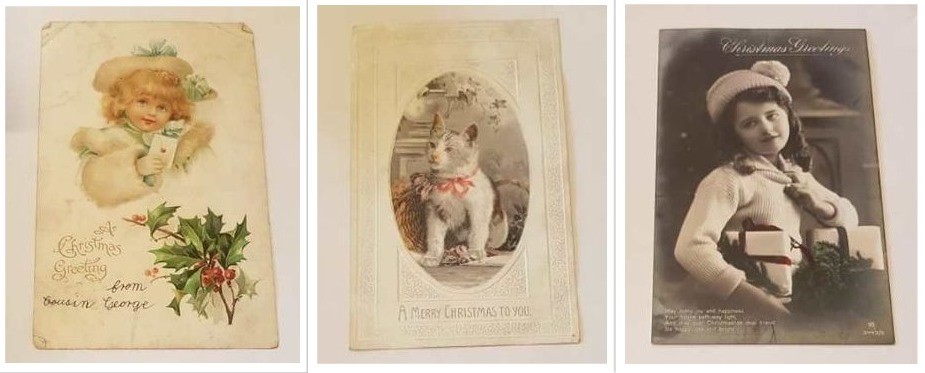Kirsty, our Assistant Curator (Area North) offered to write an appropriately festive blog for our last entry in 2018. She writes:
From the end of October you will no doubt have seen Christmas cards appearing in almost every shop on the high street. The tradition that is now deeply embedded into modern culture is however a relatively new one.
The first commercial Christmas card was designed and printed in England in 1843. The card was designed by British narrative painter and Royal Academician John Callcott Horsley at the request of his friend Sir Henry Cole.
Previously Cole had sent out hand written greetings to his friends and family on decorated paper. Finding this time consuming and inefficient he decided to commission a card that contained the message A MERRY CHRISTMAS AND A HAPPY NEW YEAR. The card was divided into three scenes; the central image showed a family enjoying seasonal festivities, while the two side panels showed scenes of Christmas charity.
With the cards proving to be popular with Cole’s friends and family, he had 1,000 cards printed and put on sale in 1843. Due to their high retail price of one shilling each, not many could afford them, and he had no more printed.
Even though the printed card didn’t catch on straight away the sentiment did, and many children were encouraged to make their own; a side tradition of the Christmas card that still exists today.
With the advances in Victorian printing technology, the price of card printing began to decrease. This along with the introduction of the halfpenny postage rate allowed the ready printed Christmas card to take off, with 11.5 million cards being produced in 1880.
We have a wide range of Christmas cards in the collections of Bradford Museums and Galleries, and although they don’t offer a comprehensive overview of the history of the Christmas card they certainly allow us a glimpse at the various themes and styles that have been used from the 1860s onwards. To give you an idea of the development of the Christmas card and the journey that it has taken we thought that we would share some of our favourites with you.
1800s
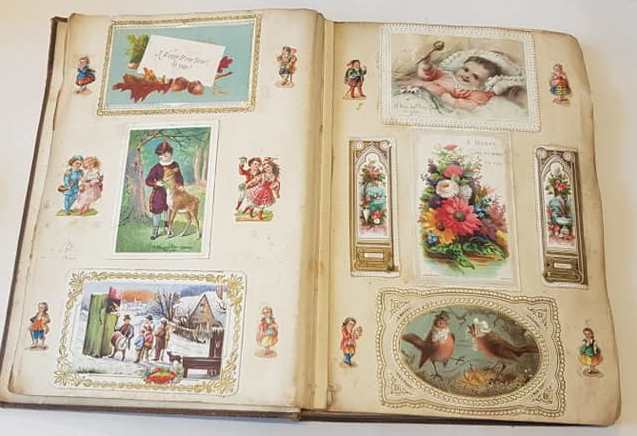
Although technically not cards, this double page spread in a scrap book dating from the early 1860s, is one of the earliest examples of the Christmas tradition in our collection, and shows an array of Christmas themed images created for the inclusion in such books. Here we can see some images such as the snowy scenes and robins that we would expect to see on a Christmas card today. Alongside these, are some pieces of imagery, such as the brightly coloured flowers that we would perhaps expect to find on a birthday card rather than a Christmas card.
Early 1900s
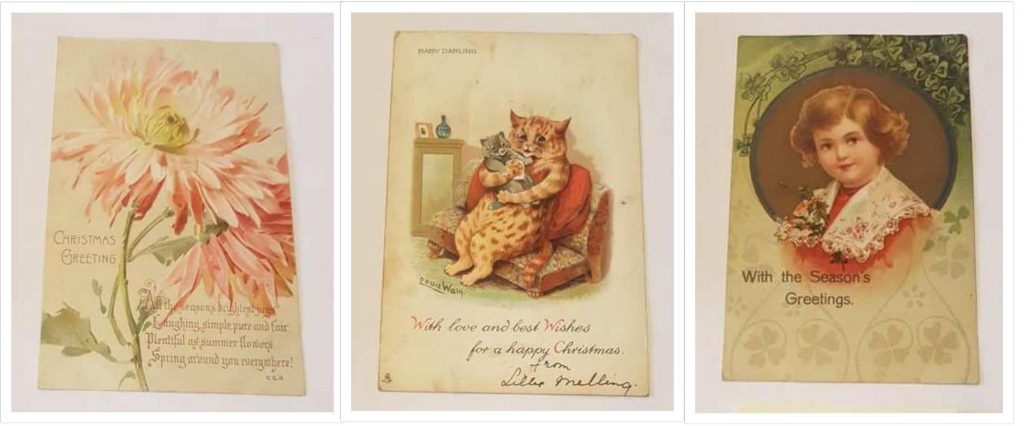

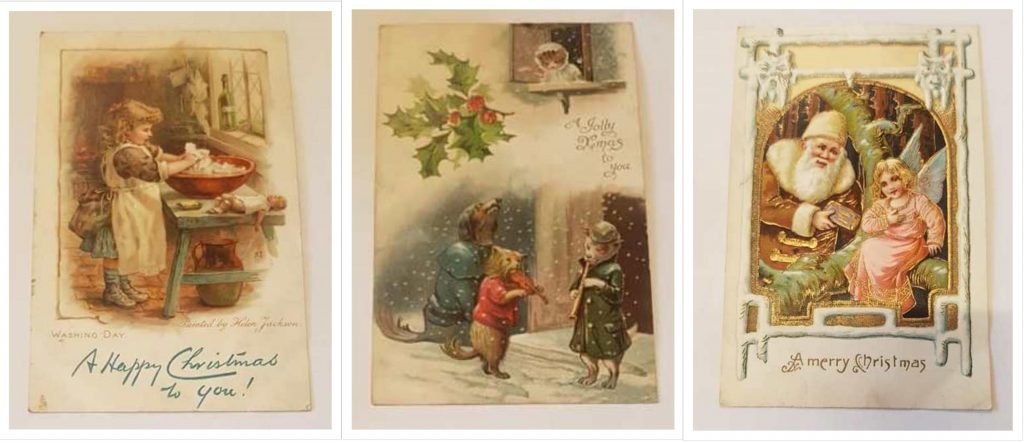
This selection of Christmas postcards date from 1903-1906. Postcards were very popular in the late 1800s and early 1900s as they didn’t require an envelope. They were therefore cheaper to send but they also fitted easily into albums, which is how many in our collection are presented.
These postcards again show a selection of themes. Religious themes and snowy scenes became very popular in the late 1800s and early 1900s and are two themes that have remained as strong traditional imagery on Christmas cards until the present day.
The snowy themes occurred due to an extremely heavy snowfall that hit Britain over the Christmas of 1836, and the theme has certainly stuck. Since then the theme of snow at Christmas has featured in many Christmas songs, stories and films, as well as cards over the years.
We can also see here an early vision of Father Christmas wearing brown and cream opposed to the red outfit that we are more used to seeing today.
Amongst these cards though there are still some scenes which to our modern eyes have very little correlation to Christmas; such as the wash day and floral picture. Perhaps some of my favourite cards from this period are the humorous whimsical cards which to us have little or nothing to do with Christmas, such as the cat in the armchair. Sometimes cards such as these appeared as the printers were reusing already existing images and simply adding a Christmas message, or sometimes it is down to the way that the Victorians viewed Christmas. The Christmas period was seen by many, as it is today, as a time of good cheer and humour, which resulted in cards being produced that would simply put a smile on the face of the receiver.
1914 – 1918

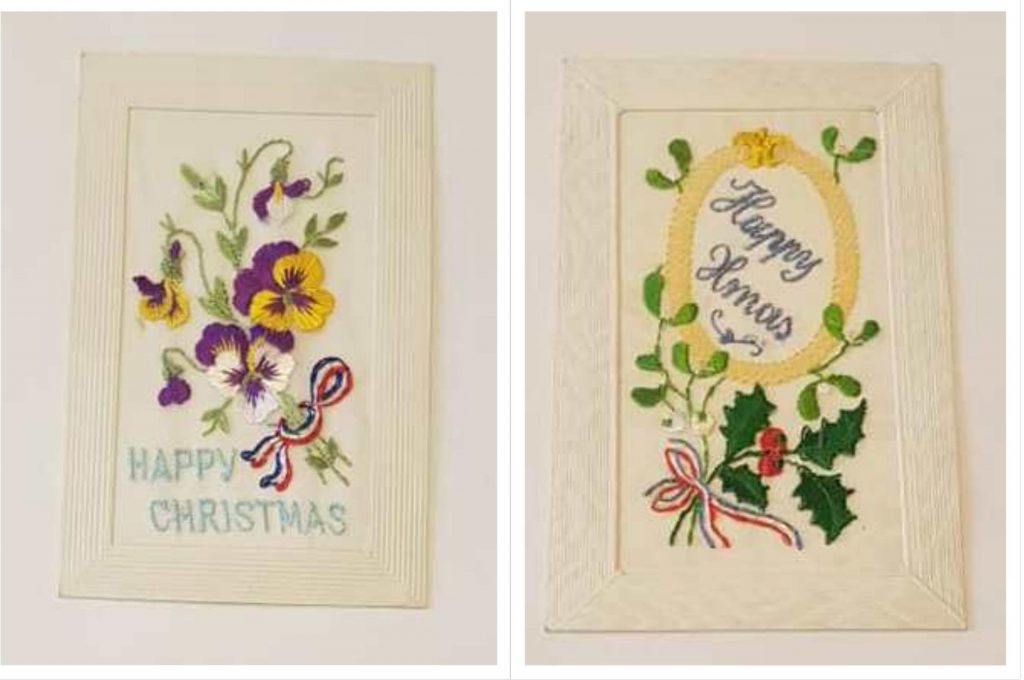
Cards dating 1914-1918
Christmas between 1914 – 1918 would have been tough, and a big step away from the festivities of previous Christmases. Numerous family members were having to spend Christmas away from home, fighting in the First World War. As a result many families waiting back home in Britain would have received beautiful silk postcards like the ones featured here.
Silk postcards and other silk souvenirs are commonly known as silks. Pre WW1 nuns in Belgium and Northern France embroidered church vestments and commercial objects which they sold to help finance their ministry. With the advent of war the nuns alongside female French and Belgian refugees adapted the products and began creating souvenirs for soldiers to send home to their loved ones. The most common souvenir to be bought from these areas were silk postcards.
Multiple designs were hand embroidered onto strips of silk mesh, which were sent to factories for cutting and mounting in postcards. Once purchased the cards were mailed home in military mail pouches at no charge to the sender.
These beautiful cards would have been greatly received back home, and their beauty would have gone some way to masking the atrocities that their loved ones were experiencing.
1930s
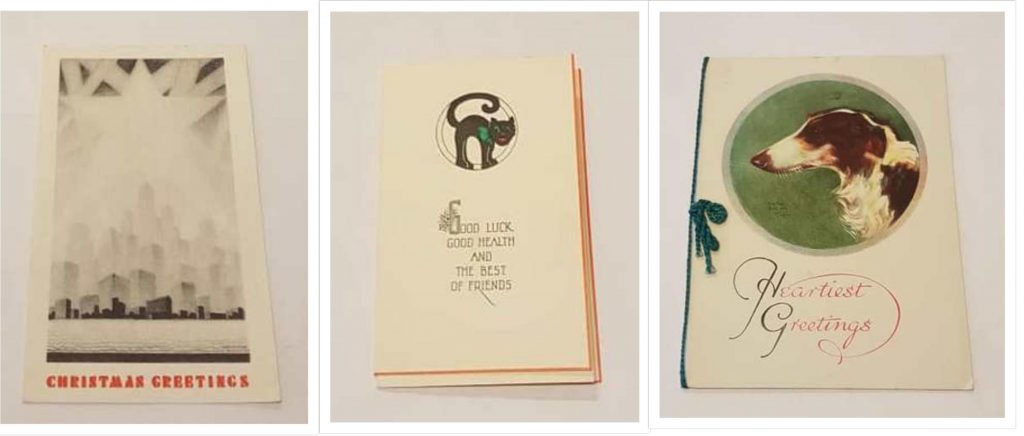
These cards from the early 1930’s still have what we today would consider unusual imagery on them. What they also show us is the addition of ribbon and foil which appeared on cards from around 1910 onwards. It seems as if the receiver of these cards was in need of a bit of good luck!
1960s onwards
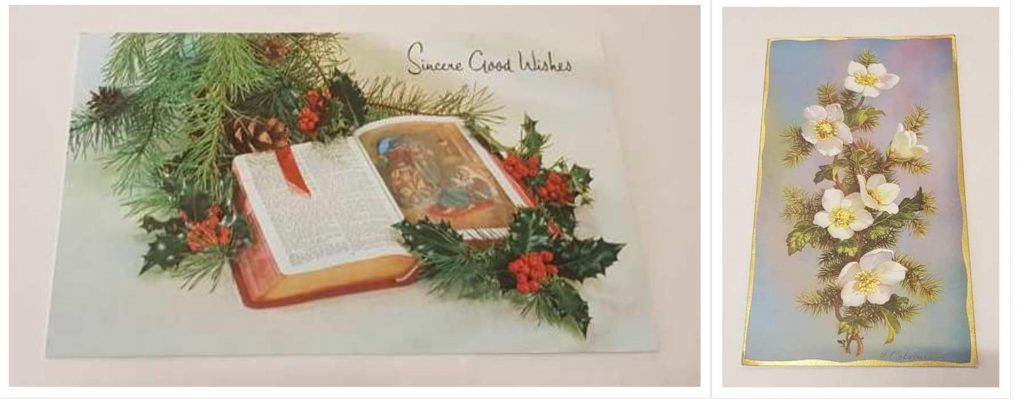
The cards in our collection dating from the late 1960s show that by this point a lot of the whimsy has gone from the Christmas cards and the images depicted were now focussed on themes that we would associate with a modern Christmas. I must say though I am very happy to see that the 2000’s have brought with it a lot of the humour and whimsy typical of the Victorian era back to our Christmas cards. Although they usually have a hint at a Christmas theme now, something that the Victorian’s didn’t always have; it is now not uncommon for us to see a sloth in a Christmas hat or a cheese joke appearing on our cards. Like with many things throughout history we seem to be coming full circle and I’m loving it!
We hope that you have enjoyed this little peak at a selection of our Christmas card collection
From all of us here at Bradford Museums and Galleries, we would like to wish you a very happy Christmas!
See you in 2019!
